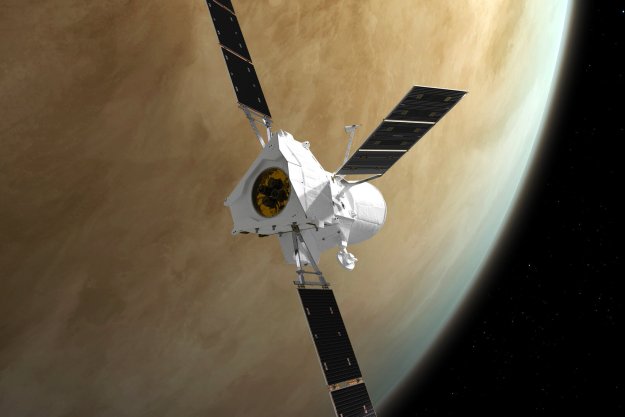Space probe BepiColombo was launched in 2018 and is currently zipping through the vast blackness of the solar system on its way to explore Mercury. But on its journey, it has just flown past Venus, and the researchers are making use of this flyby to collect information on our mysterious neighboring planet.
The BepiColombo mission, a joint venture between the European Space Agency (ESA) and Japanese Space Agency (JAXA), is a spacecraft full of instruments to study the magnetosphere of Mercury and how this is affected by solar wind. And these same instruments can be used to learn about Venus, which has become a hotspot of research interest since recent evidence suggested there could be potential signs of life in its clouds.
One such instrument is the MErcury Radiometer and Thermal Infrared Spectrometer (MERTIS), which has infrared sensors designed to look at the composition of minerals on Mercury’s surface. But it can also be used to look into a portion of the Venusian atmosphere.

The concept was tested out earlier this year when the spacecraft performed a flyby of Earth, and now it will do the same thing for Venus. “Scientific measurements will also be carried out during approach and departure and at the closest approach to Venus,” said the leaders of the MERTIS instrument, Jörn Helbert from the DLR Institute of Planetary Research and Harald Hiesinger from the Institute of Planetology at the University of Münster.
“Our imaging spectrometer MERTIS, which we built together with industry and international partners, will be used again to make these measurements,” Helbert explained. “We are already expecting some very interesting findings, with more to follow in 2021, when we will be much closer to Venus,” added Hiesinger.
The data from the Earth flyby have already demonstrated the possibilities of this approach, according to the researchers. “During the Earth flyby, we studied the moon, characterizing MERTIS in flight for the first time under real experimental conditions. We achieved good results,” said Gisbert Peter, MERTIS project manager at the DLR Institute of Optical Sensor Systems. “Now we are pointing MERTIS towards a planet for the first time. This will allow us to make comparisons with measurements taken prior to the launch of BepiColombo, to optimize operation and data processing, and to gain experience for the design of future experiments.”
This is the first time BepiColombo has flown past Venus, but it won’t be the last. The spacecraft will make another Venus flyby in August 2021, before arriving at its destination of Mercury in 2025.
Editors' Recommendations
- Russian Soyuz on its way to ISS after being delayed due to electrical issue
- NASA’s Lucy spacecraft will soon make its first flyby of an asteroid
- The art and science of aerobraking: The key to exploring Venus
- Juice spacecraft has overcome its stuck antenna issue and is ready for Jupiter
- JUICE spacecraft might have to shake loose its struck antenna




